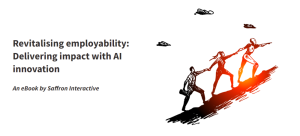The Instructional Designer role has never been considered particularly cool. But, just like mainstream indie or double roundabouts, the only reason it hasn’t been replaced is that no one’s agreed on a suitable alternative. Come to think of it, it’s pretty hard to pin down exactly what an ID is meant to be doing. Wikipedia quotes Utah State’s University to say that Instructional Designers create “instructional experiences which make the acquisition of knowledge and skill more efficient, effective, and appealing.” That’s a start, but this kind of definition feels problematic. For example, what’s an ‘instructional experience’? Presumably, it’s one that instructs the learner in their topic of choice, but how can this be effective and appealing without the presence of an instructor to breathe life into the words? And why does the definition put such emphasis on efficient acquisition? Surely learners must be able to acquire knowledge at their own pace in order to retain new skills and information in the long term.
To be effective, elearning has to be on a par with the best face-to-face training in its engagement, memorability, and potential for behaviour change. It has to put the learner’s needs at its heart while living up to their employer’s expectations. It has to prove its own worth through creating measurable change. The world is awash with compelling digital media and new generations of professionals have a world of choice at their fingertips. How, then, is elearning going to make an impact? Well, we could lose the Instructional Design title for a start. And let’s face it, the market’s already flooded with alternatives. People are being as creative with their job title as they are in their design. Here are just a few options to pick from. Do any of them apply to what you do?
-
Learning Designer
With the change of a single word, this title puts the learner in the driving seat. Now we’re creating the tools with which learners can move forward. With the emphasis switched from the teacher to the student, the learning can really focus on the motivations of its participants. What inspires someone to learn new skills, change behaviours or treat people in a different way? Ingrained habits and behaviours can be near-impossible to break so you need to delve to the real core of what drives people in that given area. Only when learning material speaks to a learner’s emotional side will it start to create a shift in attitudes or behaviour. But is it enough to write relevant material? What happens if there simply isn’t a learning culture in the company requesting the elearning?
-
Experience Architect
Here’s a good title. Pretentious? Maybe a little, but it takes a step back from old-fashioned ideas of learning. Why focus on a course, or a linear learning journey? If we want to give our learners a sense of control and purpose, they need to have autonomy over the material presented. Everyone will come to elearning with slightly different life experiences, knowledge gaps and areas of particular interest. The Experience Architect can build a world for them to explore, whether modular, assessment driven, blended, immersive or none of the above: we have the option to create so much more than ‘straight’ elearning. One example is assessment-driven learning where students can take any modules they like (or none) – all that matters is that they pass the assessment. At the opposite end of the spectrum, learning can be blissfully assessment-free and instead driven by community, with peer-to-peer gaming leader boards and discussion for encouraging healthy competition. But is this enough? Learning must be an empowering act for learners, but what use is it if this doesn’t translate to personal and business-wide return on investment?
-
Performance Technologist
It’s a long-held belief that people learn best through practical application rather than passive learning. Aristotle noted in his Nichomachean Ethics that, “For the things we have to learn before we can do them, we learn by doing them”, and it seems he may have been onto something. Sure, we’ve already got plenty of blended solutions that empower the individual and excite the creative mind. But what is our terminal objective as producers of online learning? It has to be about more than knowledge acquisition and short term recall. We want to change behaviour and boost performance, both on an individual and organisational level. Six months after the training has been rolled out, what will really be different? This is where we need to take a step back from the courses we create and view our clients’ organisations as a whole. Embedding diagnostic tools such as surveys can help us to chart a course’s success. And linking these through to a company’s KPIs is another fantastic way of showing that we are providing a platform for real organisational change. If every course written keeps its focus clearly on the end goal of improving its learners’ work performance, we might be onto a winner.
Those are just three options to choose from. But if you don’t feel they’re the right fit, why stop there? You might be a UX Designer, an Online Training Engineer, a Digital Ignorance Slayer… the possibilities are seemingly endless. What brings us together is the motivation to create exceptional elearning, so let’s not be held back by a name.





